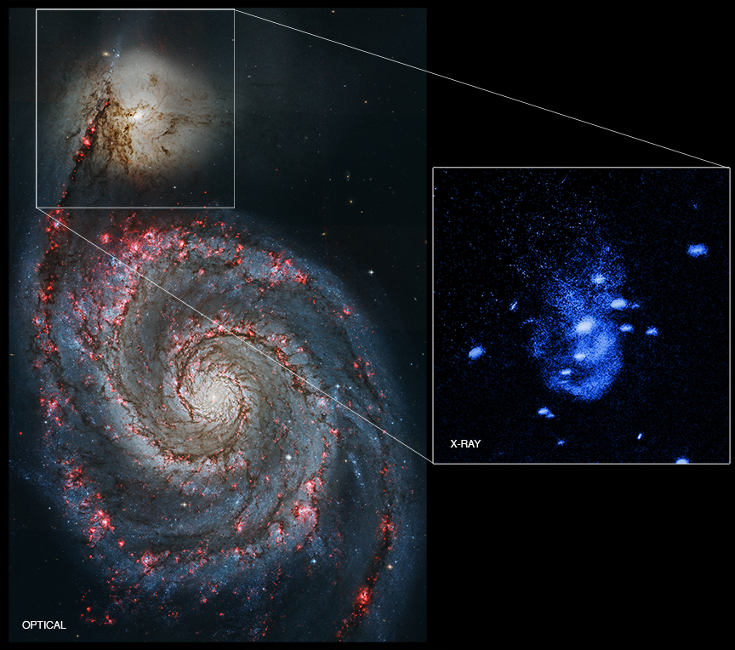
 Credit: X-ray: NASA/CXC/Univ of Texas/E.Schlegel et al; Optical: NASA/STScI
Credit: X-ray: NASA/CXC/Univ of Texas/E.Schlegel et al; Optical: NASA/STScI
Regurgitation
Astronomers know that black holes are notoriously messy eaters. Matter falling down the drain of the black hole's steep gravitational well accelerates, spiraling around the black hole's event horizon faster and faster the nearer it gets. Eventually some of this material falls in, but jostling of the infalling material can cause some of it to be ejected from the black hole. Sometimes these ejections seem to be a relatively stable, and, for supermassive black holes at the centers of galaxies, can produce strong, long-lasting, narrow beams of particles stretching for millions of light years from the black hole. Increasingly, though, astronomers are finding evidence that this ejection process may occur in spurts. Large, temporary outbursts can have enormous effects on the black hole's host galaxy, shaping the galaxy's interstellar medium for enormous distances. A good example of this process was recently discovered by the Chandra X-ray Observatory in the nearby galaxy NGC 5195. NGC 5195, shown in the box in the upper left of the Hubble Space Telescope image above, is interacting with its neighbor, a larger galaxy called M51. The inset on the right shows the X-ray image of NGC 5195 in false color. This X-ray image reveals the bright emission from the hot gas near the supermassive black hole at the center of the galaxy. Intriguingly, Chandra also finds two prominent X-ray arcs to the lower right of the black hole. Astronomers believe these arcs were produced by large, temporary outbursts of the central black hole, possibly caused by some large, temporary increase in the amount of matter the black hole was accreting. Astronomers have also found evidence that the outer arc has caused the formation of new massive stars, as the arc plows into and compresses large clouds of gas and dust in NGC 5195.
Published: January 25, 2016
<
HEA Dictionary ● Archive
● Search HEAPOW
● Other Languages
● HEAPOW on Facebook
● Download all Images
● Education ● HEAD
>

Each week the HEASARC
brings you new, exciting and beautiful images from X-ray and Gamma ray
astronomy. Check back each week and be sure to check out the HEAPOW archive!
Page Author: Dr. Michael F. Corcoran
Last modified Monday, 26-Feb-2024 17:22:50 EST


